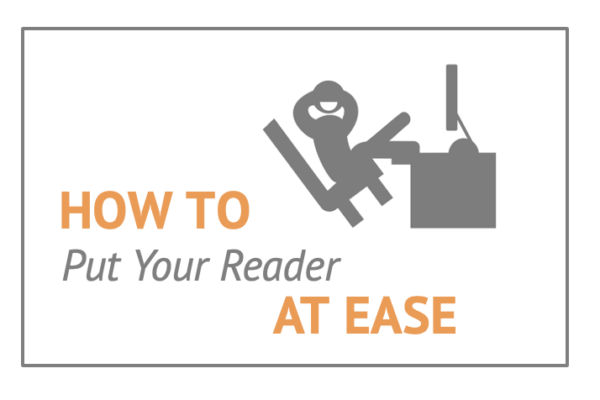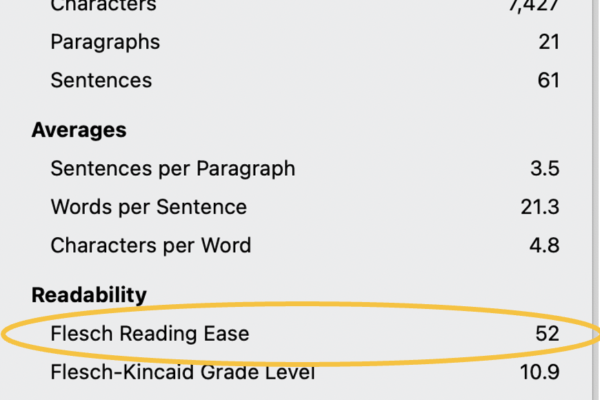
Sign up for this newsletter — it’s free!

Let’s say, just for fun, that you have recently published something about inflation for your clients.
Inflation is a technical topic. You’re trying to bundle a bunch of nuanced insights into your piece, probably including some complex explanation in there somewhere; stuff about monetary policy options or a macroeconomic dynamics. You’re plodding along with the discussion.
Before you know it, your reader is bored – even a bit uneasy. Their eyes are glazing over. They’ve lost interest – oops! They’ve bailed to read about the game and Google high-phosphorous fertilizers for their tomatoes. Darn.
Could your inflation discussion have been more … approachable? There’s an easy way to find out. When you were writing or editing your content in Word, you may have missed this miraculous little metric: your ease score.
The Flesch Reading Ease score tells you how easy your content is on your readers. Higher score, easier content. Lower score, not-so-easy content.
To get your score, just do a spelling/grammar check on your document. At the end of the check, Word gives you a readability report with word counts, etc. At the bottom of the report is your Flesch Reading Ease score. It looks like this:

I often see a tendency among financial clients to avoid simple or direct language, because it doesn’t sound smart enough. They equate complicated language with intellectual authority.
But a high ease score, and the simpler writing style that earns it, is perfectly suited to sophisticated discussions. I recently pulled samples from Bloomberg.com, The Economist, USAToday and Blackrock, as a financial example, to compare ease scores. For each source, I picked a recent piece on inflation. Here are the Flesch Reading Ease scores:
Bloomberg.com: 52.0
The Economist: 49.5
USA Today: 42.6
Blackrock: 36.6
Bloomberg and the Economist even ranked higher on ease scores than the USA Today sample! In the writing world, USA Today’s language style the benchmark for a simpler format, suited to high-school level reading. But Bloomberg and the Economist, targeted to graduate-school kind of audiences, still earned midrange ease scores.
If you don’t already track your ease scores, add it in to your editing process. As you mind the readability of your content, your readers may find your pieces more approachable and engaging.
Looking for help with high-readability financial content? Reach out and let’s talk about your project needs.
Carolyn is a freelance financial writer with 15+ years of experience in financial services. She holds an MBA from the University of Chicago Booth School of Business and is a CFA charterholder. She writes from Washington D.C.
Posted By
Carolyn
Categories
Compound Return Newsletter, Content Marketing, Freelance financial writer